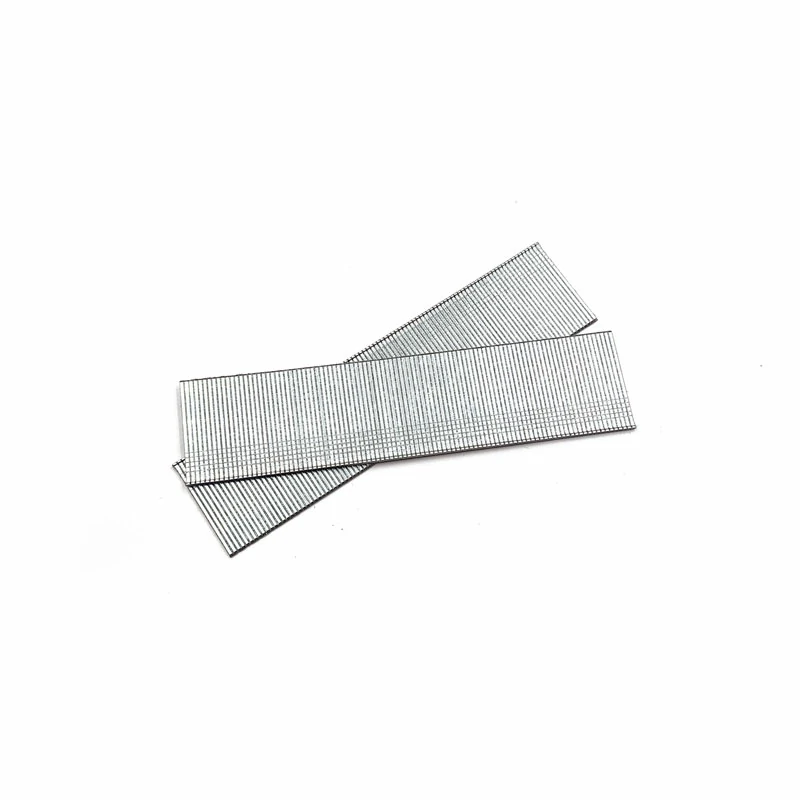1.5 inch brad nails are relatively thin and typically leave small, less noticeable holes in the material compared to larger nails or screws. However, whether the holes are visible or not depends on various factors, including the type of material, its finish, and the specific application.
Here are a few considerations regarding the visibility of holes left by 1.5 inch brad nails:
Material Type: Soft materials like wood or MDF (Medium-Density Fiberboard) are more forgiving when it comes to hiding nail holes. The fibers of these materials tend to close up around the nail, minimizing the visibility of the hole.
Finish: The presence of a finish or surface treatment on the material can affect how visible the nail holes are. For example, if the material is painted, stained, or sealed, the finish can help conceal the nail holes and make them less noticeable.
Hole Filling: If the appearance of the nail holes is a concern, they can be filled using wood putty, filler, or a similar material. After filling the holes and sanding the surface, the holes can be further camouflaged or made nearly invisible.
Placement and Countersinking: Proper placement and countersinking of the nails can also minimize their visibility. By driving the nails slightly below the surface of the material, you can create a small depression that can be filled or touched up to hide the holes.
It’s important to note that while 1.5 inch brad nails are generally designed to leave small holes, the visibility of the holes can still vary depending on the factors mentioned above. It’s a good practice to test on a scrap piece of material or inconspicuous area before applying the nails to ensure you’re satisfied with the appearance.
What are the advantages of using 1.5 inch brad nails compared to longer or shorter nails?
Using 1.5 inch brad nails offers several advantages compared to longer or shorter nails, depending on the specific application and requirements.
Here are some advantages of using 1.5 inch brad nails:
Size and Versatility: 1.5 inch brad nails are considered a mid-size option, making them versatile for a range of woodworking and carpentry projects. They are longer than shorter nails but shorter than larger framing nails, providing a balance between holding power and a discreet appearance.
Minimized Splitting: The relatively thin diameter of 1.5 inch brad nails reduces the risk of splitting or damaging delicate materials, especially when working with thin or brittle wood. They are less likely to cause significant splitting compared to larger nails, making them suitable for more delicate applications.
Discreet Fastening: Due to their smaller size, 1.5 inch brad nails leave smaller holes in the material, making them less noticeable. This is particularly beneficial when working on visible surfaces or when you want to achieve a clean and neat finish without obvious fasteners.
Holding Power: While 1.5 inch brad nails are not as strong as longer or thicker nails, they still provide sufficient holding power for many applications. They can securely fasten lightweight or medium-weight materials, such as trim, molding, paneling, or thin boards.
Easy Removal: If necessary, 1.5 inch brad nails are generally easier to remove compared to longer or thicker nails. Their smaller size allows for easier extraction without causing significant damage to the material.
Compatibility with Nail Guns: Many nail guns are designed to accommodate 1.5 inch brad nails, making them convenient and efficient for use with pneumatic or electric nailers. 1.5 inch brad nails This allows for faster and more precise installation compared to traditional hammering.
Reduced Splintering: The smaller size and finer point of 1.5 inch brad nails reduce the likelihood of splintering or denting the material during installation. This is particularly advantageous when working with delicate or thin materials where aesthetics and surface quality are important.
It’s important to note that the choice of nail length depends on the specific project requirements, material thickness, and the desired level of holding power. For heavier applications or thicker materials, longer or thicker nails may be more appropriate. Always consider the specific needs of your project and consult relevant guidelines or recommendations when selecting the appropriate nail size.
